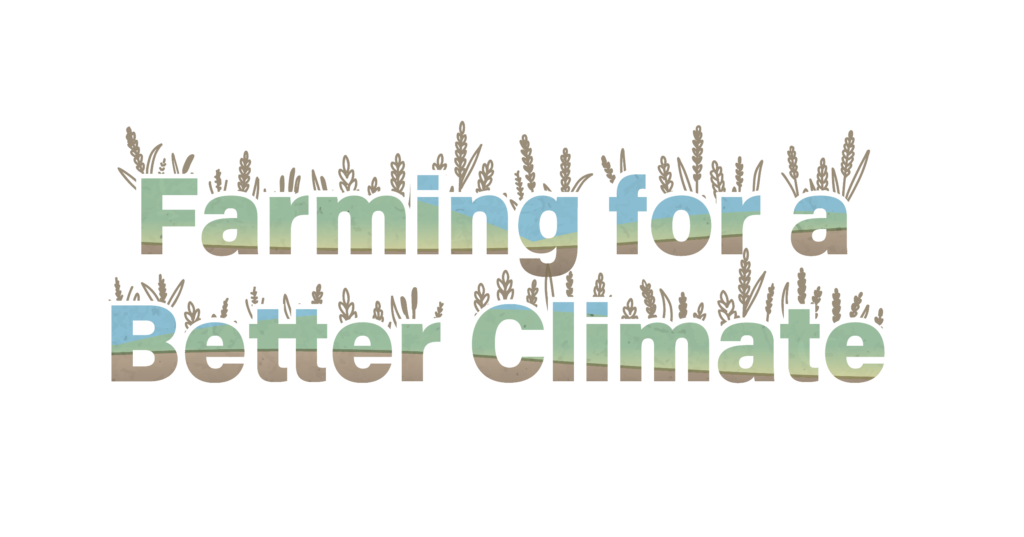
Nobody wants to see your soil -- Cover crops and climate
Cover crops are nothing new, but their relationship to a changing climate might be new to many farmers. Keeping the soil covered with plants and filled with living roots builds soil carbon, keeping heat-trapping carbon dioxide out of the air.
Compared to many of our neighboring states, cover crops have been heavily adopted in Indiana. According to 2021 Natural Resource Conservation Service data, 1.59 million acres of cover were planted across the state last year (including the winter wheat cash crop). St. Joseph County led the way in the state, with over half of their acres surveyed planted to some kind of cover.
Many cover crops are planted in an attempt to control soil erosion, promote soil health, or combat pests and weeds. However, the ability of cover crops to help soils store carbon is an important component of their management as well. Bare soils still have organic matter in which microorganisms are actively working, feeding, and growing. Those microorganisms break down carbon (and nitrogen) which are released into the air as greenhouse gasses. The resultant organic matter percentage in that bare soil declines. When fields are kept with growing plants year-round, and decaying plant matter is kept on the field, microbes release fewer greenhouse gases into the air, and organic matter in the soil increases.

Graphic: This graphic shows the many benefits that cover crops provide over time, which include the ability to better cope with weather extremes (such as improving rainfall infiltration) and slowing climate change (such as building soil organic matter). This graphic originally appeared in Cover Crop Economics, a SARE bulletin published in 2019, and was illustrated by Carlyn Iverson.
A Sustainable Agriculture Research and Education (SARE) publication entitled “Cover Crops and Carbon Sequestration” indicates US cover crops could result in the carbon sequestration (flow of carbon from the air to the soil) of 60 million metric tons of carbon dioxide (CO2)-equivalent if they were planted on 20 million acres of cropland. Converting out of metric and attempting to provide a number that can be mentally grasped, 132.3 billion pounds of carbon would be sequestered, which equates to 254 million Andre the Giants, or about a 1990 population of the US full of Andre the Giants. Using the Environmental Protection Agency’s greenhouse gas equivalency calculator, that amount of sequestration would offset one year’s worth of emissions from approximately 13 million vehicles. For context, Indiana has approximately 2.3 million vehicles on the roads, according to a 2016 study, and as of 2017, US farmers have adopted cover crops on just over 15 million acres (about 6% of all row crop acres).
Cover crops do have an effect on the microclimate where they are planted, which has its pros and cons. Of course, daikon radishes give off an odor when they die and begin to rot that remind all around that they used to exist. Most farmers that use cover crops that do not winter kill acknowledge that soil temperatures stay cooler in the spring, a known risk to be managed when using cover crops. Another interesting microclimatological factor for cover crops in Indiana consists of snow cover. Compared to bare soil, fields with cover crops will have less time under snow. Because most cover crops have a C3 photosynthetic pathway, this lack of snow allows for increases in the amount of time the cover crop is actively growing and photosynthesizing, benefiting the soil even in the winter.
Cover crops are an excellent tool for a farmer to use on his or her acres. Emerging carbon markets recognize their utility too and are rewarding farmers for new cover crop adoption (more on that in a later segment). With cover crops, farmers can take an active role in mitigating climate change while reaping local benefits too. Many already do. For more information, contact Hans Schmitz at the Purdue Extension – Posey County office via hschmitz@purdue.edu or 812-838-1331.
Additional Resources
Cover Crop Recipes
These publications from the Midwest Cover Crop Council are intended to provide a starting point for farmers who are new to growing cover crops. With experience, farmers may fine-tune the use of cover crops for their systems.
Cover Crop Economics
This bulletin from SARE looks at the economics of cover cropping, including costs, returns, and net profits over time.
References:
National Cover Crop Survey https://www.sare.org/wp-content/uploads/2019-2020-National-Cover-Crop-Survey.pdf
Cover Crops and Carbon Sequestration https://www.sare.org/publications/cover-crops/ecosystem-services/cover-crops-and-carbon-sequestration/

Farming a Better Climate is written in collaboration by the Indiana State Climate Office, Purdue Extension, and the Purdue Climate Change Research Center.
If you have questions about this series, please contact in-sco@purdue.edu.
